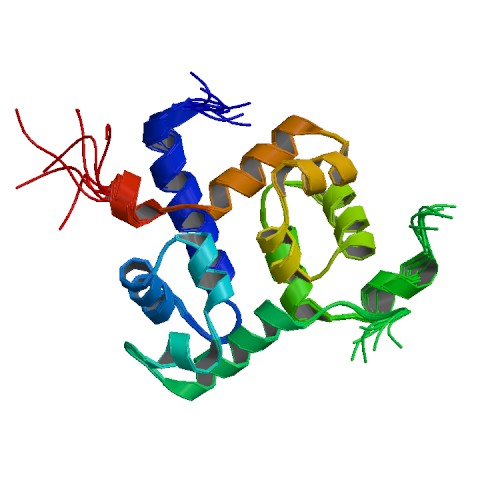ERCC4
| Excision repair cross-complementing rodent repair deficiency, complementation group 4 | |||||||||||||
|---|---|---|---|---|---|---|---|---|---|---|---|---|---|
 PDB rendering based on 1z00. | |||||||||||||
| |||||||||||||
| Identifiers | |||||||||||||
| Symbols | ERCC4 ; RAD1; XPF | ||||||||||||
| External IDs | Template:OMIM5 Template:MGI HomoloGene: 3836 | ||||||||||||
| |||||||||||||
| RNA expression pattern | |||||||||||||
 | |||||||||||||
| More reference expression data | |||||||||||||
| Orthologs | |||||||||||||
| Template:GNF Ortholog box | |||||||||||||
| Species | Human | Mouse | |||||||||||
| Entrez | n/a | n/a | |||||||||||
| Ensembl | n/a | n/a | |||||||||||
| UniProt | n/a | n/a | |||||||||||
| RefSeq (mRNA) | n/a | n/a | |||||||||||
| RefSeq (protein) | n/a | n/a | |||||||||||
| Location (UCSC) | n/a | n/a | |||||||||||
| PubMed search | n/a | n/a | |||||||||||
Excision repair cross-complementing rodent repair deficiency, complementation group 4, also known as ERCC4, is a human gene.[1]
References
Further reading
- Cleaver JE, Thompson LH, Richardson AS, States JC (1999). "A summary of mutations in the UV-sensitive disorders: xeroderma pigmentosum, Cockayne syndrome, and trichothiodystrophy". Hum. Mutat. 14 (1): 9–22. doi:10.1002/(SICI)1098-1004(1999)14:1<9::AID-HUMU2>3.0.CO;2-6. PMID 10447254.
- Park CH, Sancar A (1994). "Formation of a ternary complex by human XPA, ERCC1, and ERCC4(XPF) excision repair proteins". Proc. Natl. Acad. Sci. U.S.A. 91 (11): 5017–21. PMID 8197175.
- Liu P, Siciliano J, White B; et al. (1993). "Regional mapping of human DNA excision repair gene ERCC4 to chromosome 16p13.13-p13.2". Mutagenesis. 8 (3): 199–205. PMID 8332082.
- Sijbers AM, de Laat WL, Ariza RR; et al. (1996). "Xeroderma pigmentosum group F caused by a defect in a structure-specific DNA repair endonuclease". Cell. 86 (5): 811–22. PMID 8797827.
- Brookman KW, Lamerdin JE, Thelen MP; et al. (1996). "ERCC4 (XPF) encodes a human nucleotide excision repair protein with eukaryotic recombination homologs". Mol. Cell. Biol. 16 (11): 6553–62. PMID 8887684.
- Shen MR, Jones IM, Mohrenweiser H (1998). "Nonconservative amino acid substitution variants exist at polymorphic frequency in DNA repair genes in healthy humans". Cancer Res. 58 (4): 604–8. PMID 9485007.
- Sijbers AM, van Voorst Vader PC, Snoek JW; et al. (1998). "Homozygous R788W point mutation in the XPF gene of a patient with xeroderma pigmentosum and late-onset neurologic disease". J. Invest. Dermatol. 110 (5): 832–6. doi:10.1046/j.1523-1747.1998.00171.x. PMID 9579555.
- Matsumura Y, Nishigori C, Yagi T; et al. (1998). "Characterization of molecular defects in xeroderma pigmentosum group F in relation to its clinically mild symptoms". Hum. Mol. Genet. 7 (6): 969–74. PMID 9580660.
- de Laat WL, Sijbers AM, Odijk H; et al. (1998). "Mapping of interaction domains between human repair proteins ERCC1 and XPF". Nucleic Acids Res. 26 (18): 4146–52. PMID 9722633.
- Köberle B, Masters JR, Hartley JA, Wood RD (1999). "Defective repair of cisplatin-induced DNA damage caused by reduced XPA protein in testicular germ cell tumours". Curr. Biol. 9 (5): 273–6. PMID 10074455.
- McCutchen-Maloney SL, Giannecchini CA, Hwang MH, Thelen MP (1999). "Domain mapping of the DNA binding, endonuclease, and ERCC1 binding properties of the human DNA repair protein XPF". Biochemistry. 38 (29): 9417–25. doi:10.1021/bi990591+. PMID 10413517.
- Fan F, Liu C, Tavaré S, Arnheim N (1999). "Polymorphisms in the human DNA repair gene XPF". Mutat. Res. 406 (2–4): 115–20. PMID 10479728.
- Shannon M, Lamerdin JE, Richardson L; et al. (2000). "Characterization of the mouse Xpf DNA repair gene and differential expression during spermatogenesis". Genomics. 62 (3): 427–35. doi:10.1006/geno.1999.6016. PMID 10644440.
- Araújo SJ, Nigg EA, Wood RD (2001). "Strong functional interactions of TFIIH with XPC and XPG in human DNA nucleotide excision repair, without a preassembled repairosome". Mol. Cell. Biol. 21 (7): 2281–91. doi:10.1128/MCB.21.7.2281-2291.2001. PMID 11259578.
- Kumaresan KR, Hwang M, Thelen MP, Lambert MW (2002). "Contribution of XPF functional domains to the 5' and 3' incisions produced at the site of a psoralen interstrand cross-link". Biochemistry. 41 (3): 890–6. PMID 11790111.
- Strausberg RL, Feingold EA, Grouse LH; et al. (2003). "Generation and initial analysis of more than 15,000 full-length human and mouse cDNA sequences". Proc. Natl. Acad. Sci. U.S.A. 99 (26): 16899–903. doi:10.1073/pnas.242603899. PMID 12477932.
- Sridharan D, Brown M, Lambert WC; et al. (2003). "Nonerythroid alphaII spectrin is required for recruitment of FANCA and XPF to nuclear foci induced by DNA interstrand cross-links". J. Cell. Sci. 116 (Pt 5): 823–35. PMID 12571280.
- Zhu XD, Niedernhofer L, Kuster B; et al. (2004). "ERCC1/XPF removes the 3' overhang from uncapped telomeres and represses formation of telomeric DNA-containing double minute chromosomes". Mol. Cell. 12 (6): 1489–98. PMID 14690602.
- Chen Z, Xu XS, Harrison J, Wang G (2004). "Defining the function of xeroderma pigmentosum group F protein in psoralen interstrand cross-link-mediated DNA repair and mutagenesis". Biochem. J. 379 (Pt 1): 71–8. doi:10.1042/BJ20031143. PMID 14728600.
| This protein-related article is a stub. You can help Wikipedia by expanding it. |